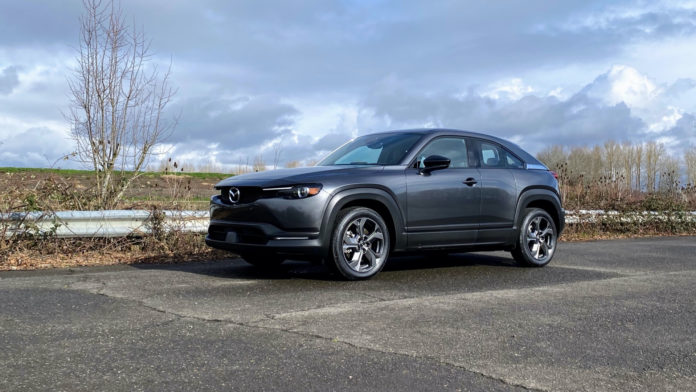The MX-30 EV is a confusing one. It embodies a unique package not shared with any gasoline model and its design details transcend its sub-$40,000 price tag. Yet it sends out some of the disappointing signals of the so-called compliance cars from a decade earlier.
For the most part, these were electric conversions of small cars—the Fiat 500, Ford Focus, Chevy Spark, and Volkswagen Golf, to name just a few—fitted with battery packs for a range of about 100 miles and sold only in California or the West Coast.
Although these models may have had platforms to prove the EV tech that was to come, they were never sold in the U.S. in numbers high enough to go much beyond placating regulators in Sacramento.
2022 Mazda MX-30 EV
Mazda is doing that now with the MX-30 EV. It plans to sell it at the very low volumes of those models from a decade ago, and it’s missing the performance, range, and charging rates that would attract higher sales numbers and general interest in the booming EV segment.
A carful of mixed signals
At 100 miles of EPA-rated range, it has a similar city-driving tether to the compliance cars of yore. It fast-charges at the rate those EVs charged at 10 years ago—one that makes highway trips nonviable. And it doesn’t always drive like a fully-baked product.
But in other aspects, it feels like Mazda has pulled out all the stops. While it hasn’t spent more money fitting a little more range into the MX-30, it’s given it some lavish cabin materials—including a woven recycled fiber that’s just-right soft to the touch, and some fantastic-looking cork trim, with Mazda noting that the company was originally a cork manufacturer. It feels special inside—even if to some eyes (mine included) there’s just a little too much bright edging.
For all the special inside, the MX-30 looks awkward up close. Although it mostly shares its dimensions with the CX-30 on which it’s loosely based, the MX-30 has its own unique shape through and through. And while it might be intriguing at some photo angles, up close the sides meet the roofline in ways that tend to be seen through a fisheye lens.

2022 Mazda MX-30 EV
Glut of design details, dearth of space
The MX-30 has an intriguing suicide-door layout that looks like it might help improve access. But watch your noggin; even if it’s just getting into the front seat, the door cut seems small. Getting into the back seat involves negotiating over an awkwardly elevated side sill but below a latch that protrudes downward. And in anything close to an acceptable driving position for anyone around six feet or taller, there’s simply not enough space in back for heads, knees, or feet. Or, as I found out, for a child seat while asking any adult to sit ahead of it.
Instead of a revolutionary approach like that of the BMW i3, which reconceived the cabin with no allowance for a traditional engine bay, the MX-30 is built on a borrowed ICE platform and communicates some unwillingness to let go of design traits connecting to gasoline models. Even as a coupe, it feels rather cramped in front. Because of the way Mazda has designed the center console, it feels as if it takes up a lot of space between those in front, and for my long legs the sharp edge along the side was a constant reminder.
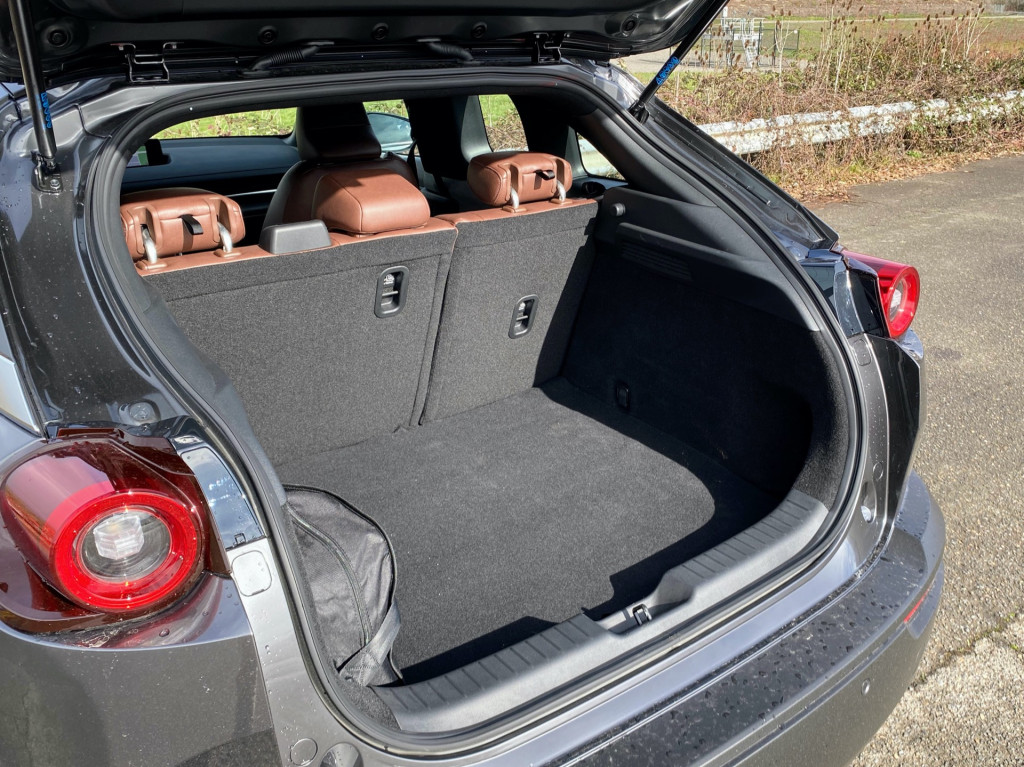
2022 Mazda MX-30 EV
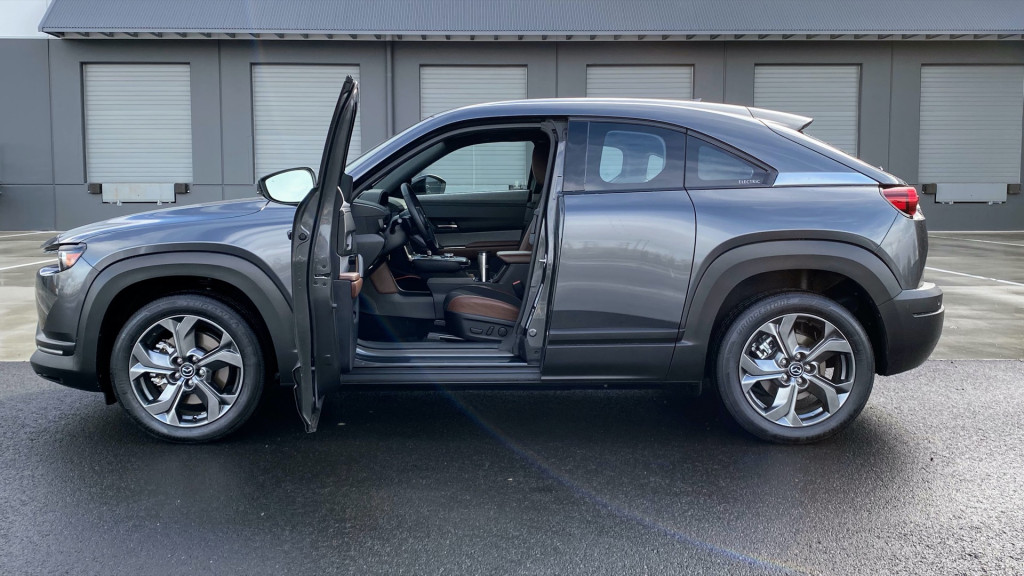
2022 Mazda MX-30 EV
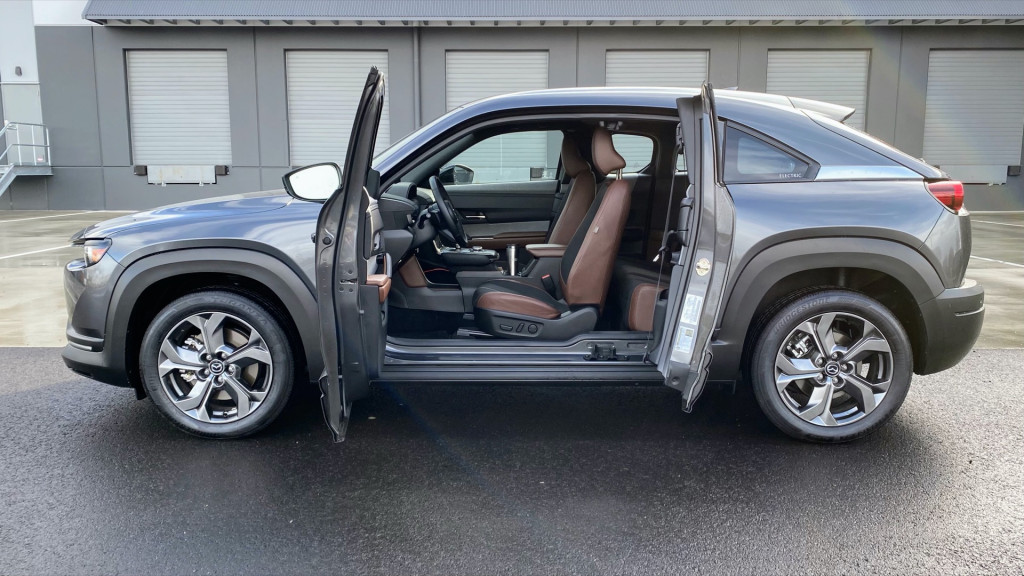
2022 Mazda MX-30 EV
To put it bluntly, Mazda has gone overboard with design, and you either love it or you hate it. After a week, I couldn’t get over the multi-level center-console layout, what was inside it, and why the armrests couldn’t line up at the same level.
The 8.8-inch infotainment screen depends on a rotary controller (yup, no touchscreen) on the center console. Apple CarPlay worked just fine via a wired connection, if you have a little patience. Between the infotainment screen and console, there’s a second 7.0-inch touchscreen that covers climate functions and is flanked by hard buttons for critical items like the defroster, temperature, and fan speed.
Efficiency, yes
Last year, when I spent a week with the MX-30 EV, there were no examples then shown as available at West Coast dealerships. It appears we missed the lot of just 520 MX-30s that Mazda delivered for 2022. But now with 2023 numbers confirmed on the way—and the tantalizing possibility of a rotary range extended MX-30 R-EV—these details should prove useful in deciding whether the MX-30 EV is for you.
The MX-30 delivers 143 hp and 200 lb-ft of torque through a single motor that drives the front wheels. It feels reasonably punchy at low speeds, and quite perky and quick up to about 50 mph, but beyond that there’s nothing noteworthy.
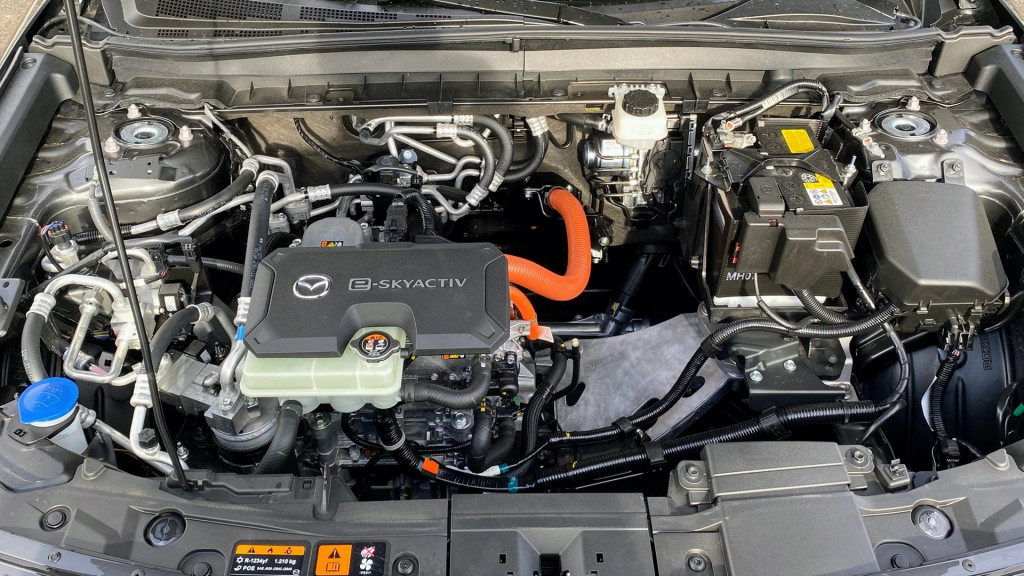
2022 Mazda MX-30 EV
When I got the MX-30, its trip computer had never been reset and at just over a thousand miles it displayed 2.9 miles per kwh. After topping off the charge it suggested 97 miles of range—just short of the official EPA range of 100 miles.
From what I saw in days following, it’s easy to match the MX-30 EV’s EPA estimate, even in chilly weather (temps mostly in the 40s)—and quite likely to exceed it in warmer weather.
After nearly 70 miles—all mixed-speed, suburban-style driving—the range meter showed 31 miles and 32% of its state of charge remaining, and it chimed and warned me that the battery was low. After going 83 miles, the battery pack was at 20% remaining and the range meter suggested 21 miles remaining. I arrived at a convenient charger with 14% remaining, when it estimated 16 miles left, and at that point I’d gone 85.3 miles—so right on track with the EPA ratings.
Overall, over about 110 miles including some driving beyond that charge, the MX-30’s average locked to the same 3.4 miles per kwh that I’d seen on my first charge.
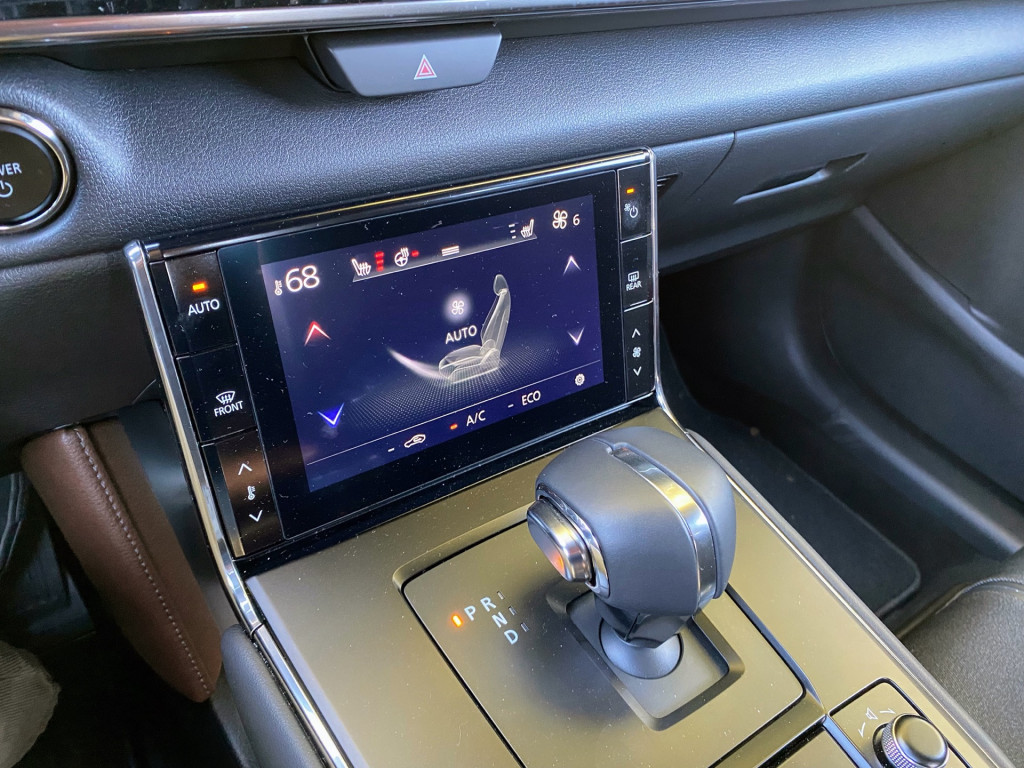
2022 Mazda MX-30 EV
I used the climate control that entire time, and it represented three or four “cold starts” in which the heater needed to bring the cabin back up to temp. Based on a quick look at consumption with the climate system off, you might see 20% more in mild weather or only using seat warmers.
Range, charging: This doesn’t work for highway trips
The MX-30’s DC fast-charging is exactly as Mazda claims, too, but it takes a while charging at the claimed rate to understand that this would be tortuous for any kind of highway trip.
I plugged into a 125-kw DC fast charger and the MX-30’s gauge cluster declared that I had 2:15 remaining for a full charge. It seemed like it was going to be much faster than that at first, as it blipped right up to Mazda’s listed maximum of 36 kw and stayed there for 14 minutes until I’d doubled the state of charge to 28%. Then the charge rate gradually slowed. By 40% it was below 21 kw, at 50% it was at about 18 kw.
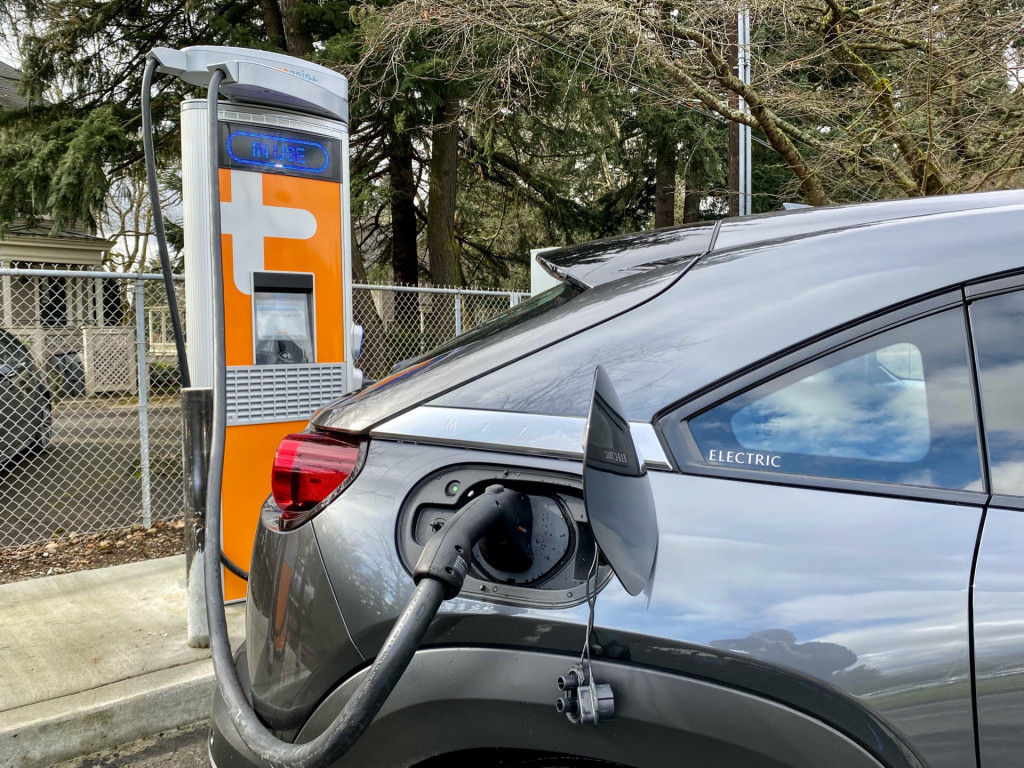
2022 Mazda MX-30 EV

2022 Mazda MX-30 EV
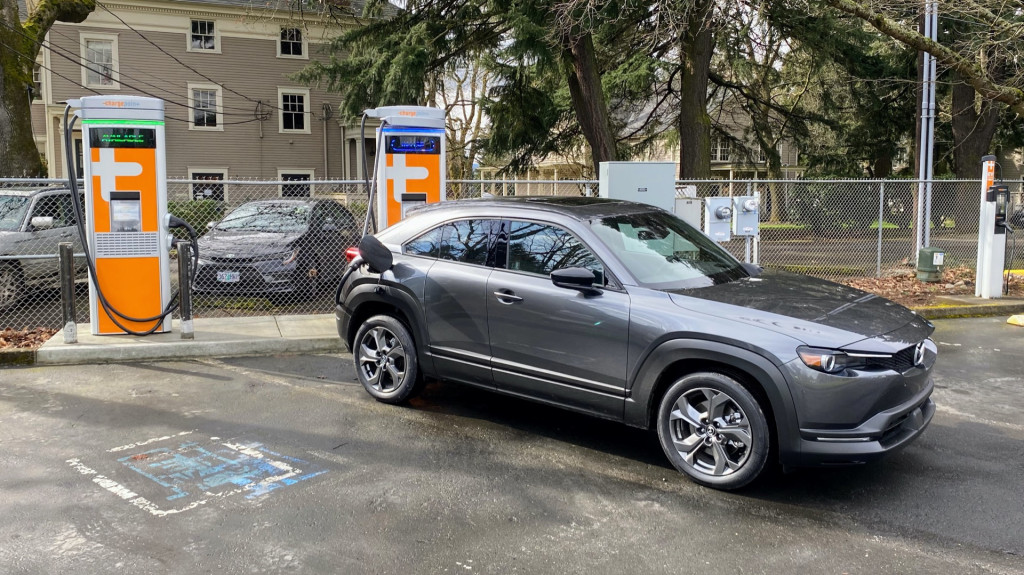
2022 Mazda MX-30 EV
It seemed like the right time to unplug at 54%, when it had dropped to about 17 kw, and the charger displayed that I had added 40% and 40 miles in 40 minutes.
If you decide to try to take the MX-30 EV on a weekend road trip, it likely means the best case is that you’ll be driving 70 or 80 miles at a time, then waiting about 90 minutes for the bulk of a charge. In repeating this pattern, simply put, you’ll be charging more than you’ll be spending time on the road.
Driving experience: Pleasant but not inspiring
The MX-30 defaults to a really nice level of regenerative braking that, when you lift off the accelerator, compares to a gasoline vehicle running one gear lower than you might normally be in at that speed. From there you can click up two steps arriving at what’s essentially coasting, or down two steps to arrive at something close to one-pedal driving, but leaving the brake application to you.
The MX-30 is inspiring to drive, especially if your idea of inspiring comes down to the tuning of the steering and suspension as you negotiate a grid of city streets. While the steering provides uncommonly good feedback and Mazda has worked to make the body more rigid, the high driving position and some fore-and-aft pitching over anything but perfect surfaces altogether second-guess any confidence this setup inspires on tight, curvy roads. Although thanks to the small battery pack, its 3,700-pound curb weight is only slightly higher than comparable gasoline models.
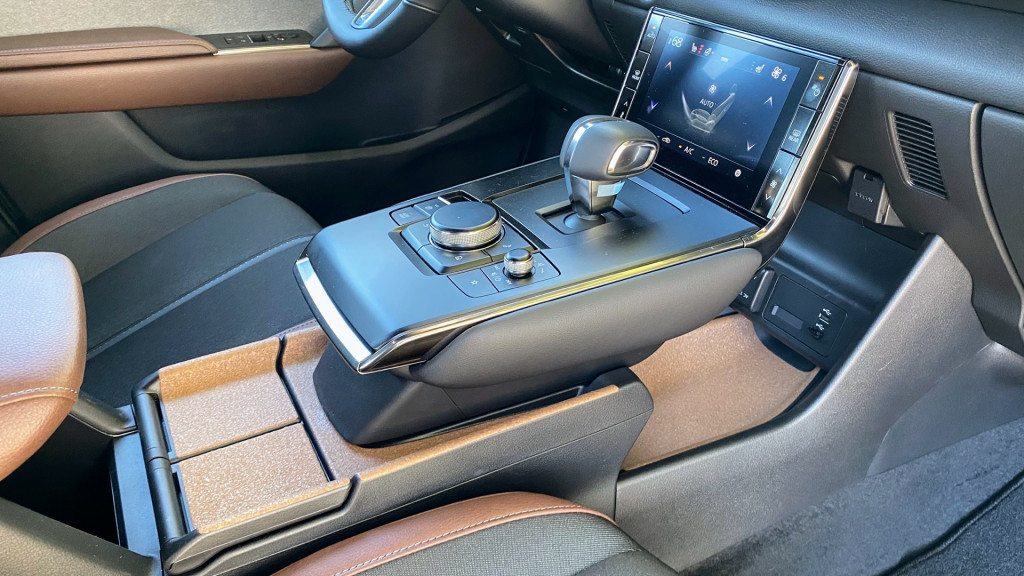
2022 Mazda MX-30 EV
Other pleasant surprises included how quiet the MX-30 is inside. It’s very well isolated from road and wind noise—even at 75 mph, where you won’t be for very long in any case, given the range.
Unfortunately that means you only notice more of the “electronic sound” that the MX-30 makes at all speeds through the speakers, a whine/whir that reminds me of old-style arcade driving games. It’s novel for the first few minutes, but I found it hard to filter out at city speeds. I prefer the silent nature of EVs and how it can put me more in touch with the car or cabin conversation.
The owner’s manual explains: “Electric sound is a system that uses a speaker to emit sound into the cabin to notify the driver of the vehicle’s behavior.” I couldn’t find any workaround, and there’s no suggested way to turn it off (other than open the doors or tick the e-brake on).
The cost of compromise
The MX-30 is offered in base and Premium Plus models, with the key additions being Bose audio, a heated steering wheel, a surround-view camera system, and a few more safety items.
My test 2022 model, a Premium Plus with metallic paint, added up to $38,150 as tested, including destination. For 2023, including modest price hikes, it would total $38,990—and as it’s made in Japan it’s not eligible for the EV tax credit.
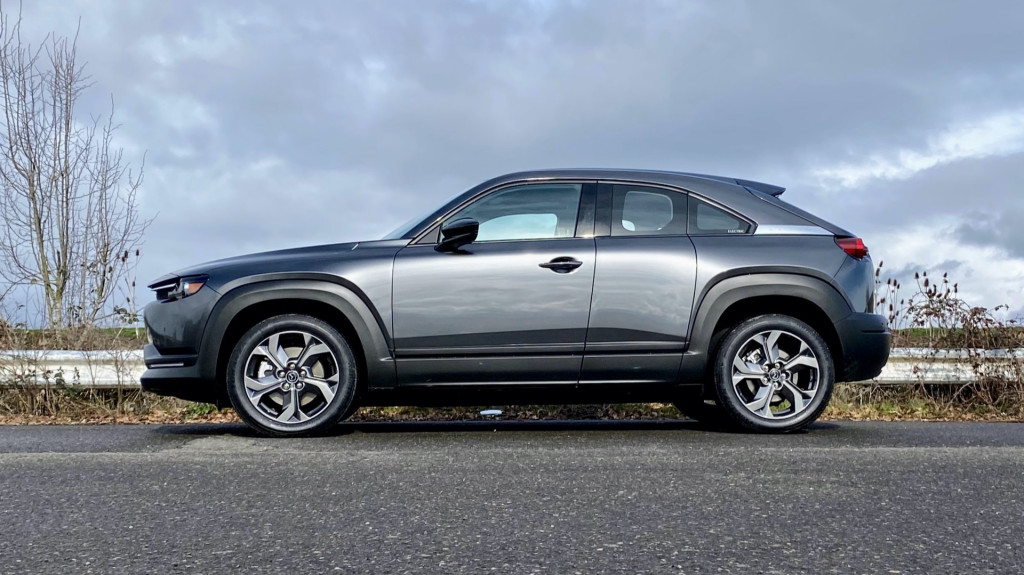
2022 Mazda MX-30 EV
What kind of sense does the MX-30 make in today’s EV market? It doesn’t rival the Nissan Leaf or the Chevy Bolt EV. Those are far more practical.
Even the two-door Mini Cooper SE seems a pragmatic pick next to this. It’s all relative.
The MX-30 isn’t that much more distinct than some of the compliance cars of a decade ago either, but it may be as rare as some exotic sports cars costing many times as much. If you already have another car for weekend getaways then, well, you do you.

